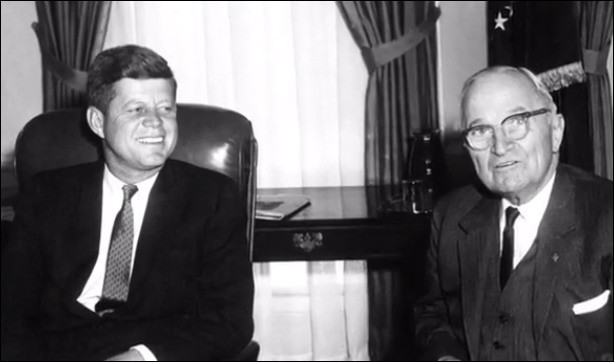With the 50th anniversary of the Cuban Missile Crisis going on, the publication of secret recordings made by President Kennedy get new attention.
For 13 days in October of 1962, the nation was on the brink of nuclear war. That’s what they always say — the brink, always the brink. The Soviet Union was moving missiles to Cuba and the United States found out, thanks to those U-2 spy planes, just like the one that Francis Gary Powers was flying when he got caught spying on the Soviets in 1960.
The event has often been described as an example of a macho showdown between President John F. Kennedy and Soviet leader Nikita Khrushchev. The story goes that at its climax U.S. Secretary of State Dean Rusk said, “We’re eyeball to eyeball, and I think the other fellow just blinked.” As it turns out, “eyeball to eyeball” probably meant a distance of 750 miles, but we get the message: a game of chicken was played and we managed to emerge unburnt by Russian radiation.
As scholars remind us of the crisis on its 50th anniversary, we have the added bonus of recordings of President Kennedy from that time, now available in book and CD form as Listening In: the Secret White House Recordings of John F. Kennedy, from Hyperion Books.
President Kennedy had a secret system installed in the White House in the summer of 1962. As far as anyone knows, the only other people who knew about it were his secretary, Evelyn Lincoln, and the Secret Service agent who installed the system, Robert Bouck. It’s possible that the president’s brother, Robert F. Kennedy, also knew — he’s the one who ordered it dismantled just hours after the president was assassinated on 22 November 1963. It’s also possible that RFK only found out about it that day.
The system was set up so that President Kennedy could activate the recording machines with the push of a hidden button. Microphones were hidden in key places in the Oval Office, the activation buttons were tucked around the office also. The tapes were gathered and delivered to Evelyn Lincoln for safekeeping. When the president was killed, she turned them over to the National Archives.
But the public didn’t know about the existence of the tapes until 1973. White House tapes were all the talk in 1973, thanks to President Richard Nixon‘s insane use of them while he was plotting to circumvent the Constitution. By 1976, the Kennedy recordings were legally deeded to the Kennedy Library and the National Archives, and since the late 1970s they’ve been housed at the Library. The files include 248 hours of meeting tapes and 12 hours of telephone tapes.
Over the years, more and more tapes were declassified, especially those related to the Cuban Missile Crisis. Listening to the tapes, you get the impression that Kennedy was a smart, snappy leader. He asks a lot of questions, he talks fast, he leans hard.
By Saturday, October 27th, the crisis was over. Khrushchev agreed to withdraw missiles from Cuba and Kennedy agreed to withdraw missiles from Turkey. Incidentally, October 27th this year is also a Saturday.

For more on the recordings, here are a few good places:
An explanation of the recordings, from the JFK Library is here.
WNYC has elected audio files for “On the Brink of Nuclear War,” and some background.
WBUR also has some audio files and a nice write-up.
PBS NewsHour had a nice interview and some clips last week. You can see that video here.
ABC News also covered the secret recordings, and in this interview they talk to John Kennedy’s daughter, Caroline Kennedy, about what it’s like to listen to the tapes. Caroline Kennedy wrote the introduction to the published transcripts.
The National Archives has a Cuban Missile Crisis timeline that includes several recordings. They require keen hearing.
For more on the Cuban Missile Crisis, see more at the National Archives, including this collection of declassified photos. Mashable also has a photo gallery with many of the same images, comparing them to “What Google Maps Shows Today.”
Also, Cuban Missile Crisis.org has lots of background and many related links.
October1962 is another collection of documents and essays about the event.
A brief memoir by PBS journalist Michael D. Mosettig tells what it was like to be a junior reporter in Washington at the time (Mosettig was only 20 years old, and still in college).
